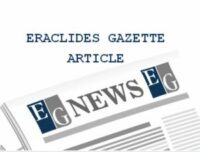By: Matt Colon, Associate, Miami
As any good Floridian knows, when a hurricane’s cone of danger sets its gaze upon the Sunshine State, it is time to batten down the hatches. We all know to stock up on water, canned fruit salad, and batteries. We shutter our windows, charge our cell phones, park our cars in garages, and say precautionary farewells to patio furniture too big to fit into our living rooms.
As of April 28, 2016, a storm that we have known to be brewing on the horizon suddenly shifted its cone of danger, making Florida workers’ compensation laws its target. It’s the first named metaphorical storm of the 2016 hurricane season and its name is Castellanos. As with any storm, preparation and planning are the keys to avoiding catastrophe. The tools to mitigating hourly attorney fee exposure are at our disposal and within our control. One of those tools is the DWC-19.
The DWC-19, more formally known as the Employee Earnings Report (EER), is a product of Administrative Code 69L-3.021. The Code allows for Form DFS-F2-DWC-19 to be sent to the employee by either the employer or the claim administrator so that the requesting party can be apprised of any earnings made by the claimant during the time period requested on the form. Per the Code, upon the receipt of the DWC-19, the employee must complete, sign, and return the form within 21 days. If the employee fails to return the form within that time frame, then all payments of compensation for TTD, TPD, PTD, supplemental PTD, and even impairment benefit income, shall immediately cease and are no longer considered due and owing until such time that the outstanding form(s) are returned. See Jack Feagin Elec., Inc. v. Hallmark, 894 So.2d 1083 (Fla. 1st DCA 2005). Now more than ever, such a tool is invaluable. Claimant’s attorneys cannot obtain a benefit for their client if it is not due or owing, and without obtaining a benefit they cannot be entitled to a fee.
DWC-19s should be sent to the claimant contemporaneously with the assignment of a work restriction. Thereafter, they should be calendared to go out monthly. In line with Republic Waste Servs. v. Ricardo, 68 So.3d 934 (Fla. 1st DCA 2011), remember to retain proof that the forms were actually sent. It is a common misconception that such forms need only be sent once the claimant has been terminated or is otherwise no longer working for the employer. The purpose of the DWC-19 is to reveal all of the claimant’s income from any source, and as a result, indemnity can be suspended even if the claimant remains employed by the insured.
An outstanding DWC-19 will provide an additional line of defense against attorney fees on claims for indemnity and can even act to safeguard against the “penalties and interest only” petitions that are currently trending on the dockets (penalties and interest cannot accrue on benefits that are not due). Remember, however, that DWC-19s will not work retroactively with regard to penalties and interest. Once a benefit is due, penalties and interest will attach, which is why it is important to have the forms sent consistently and systematically. Additionally, remember that upon receipt of a past due DWC-19, indemnity benefits become due and owing once more. Penalties and interest will become due according to the date the DWC-19 is returned, if not paid timely at that point.

